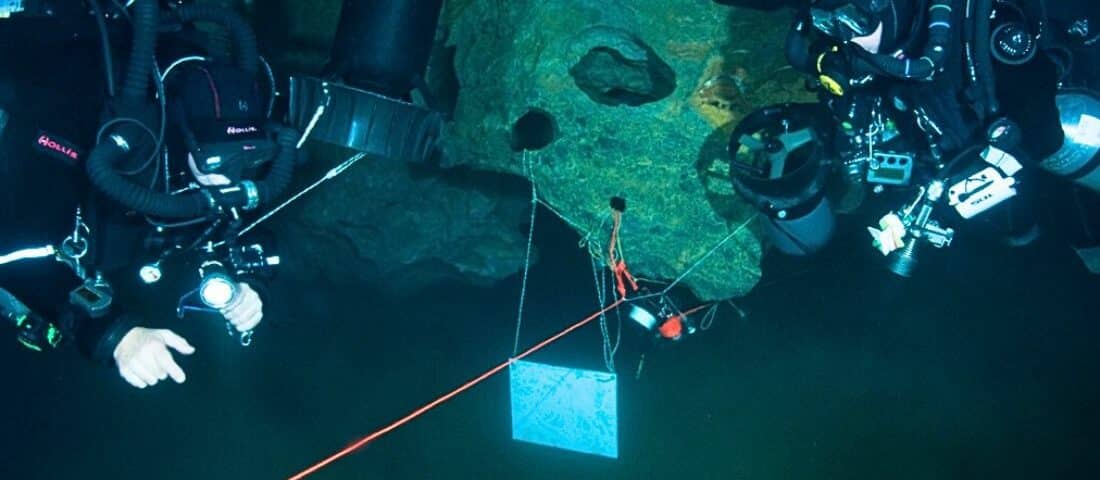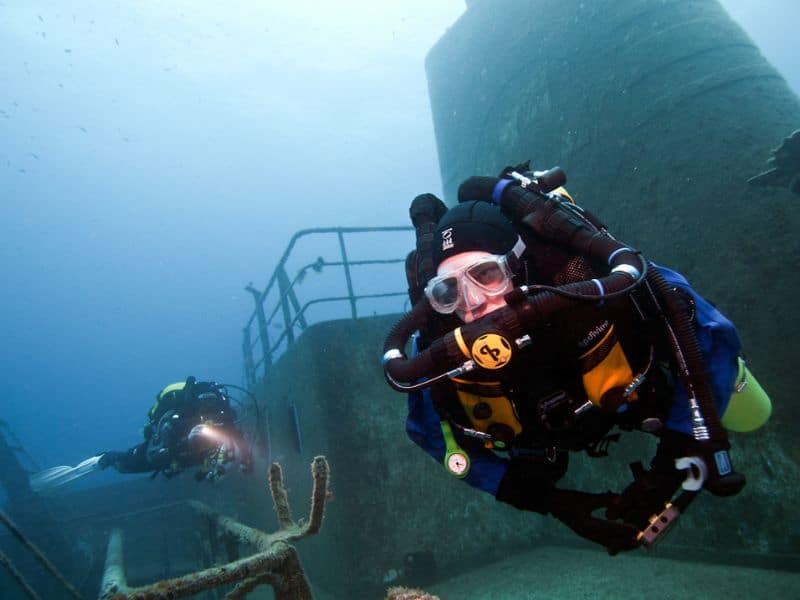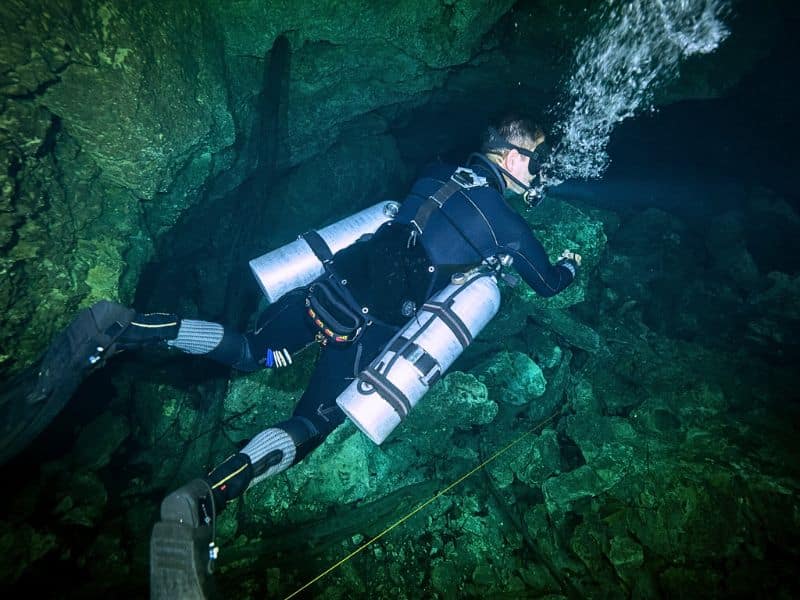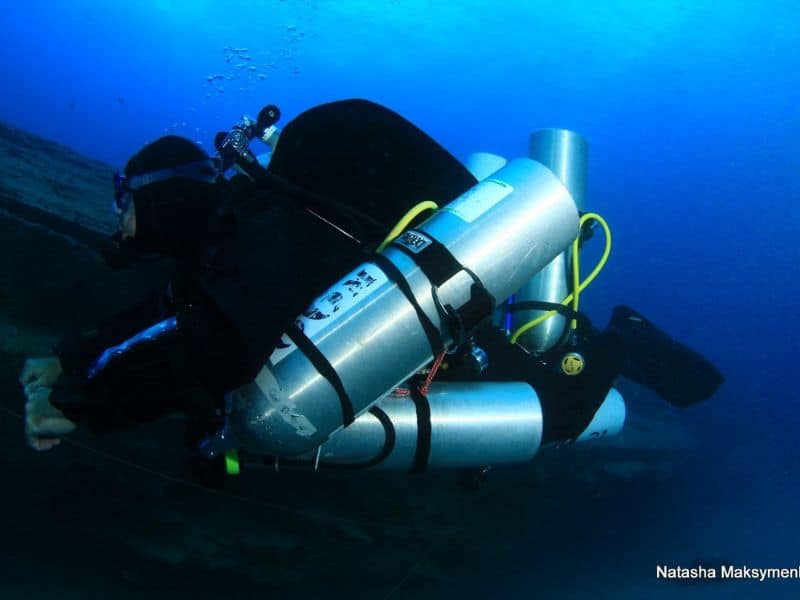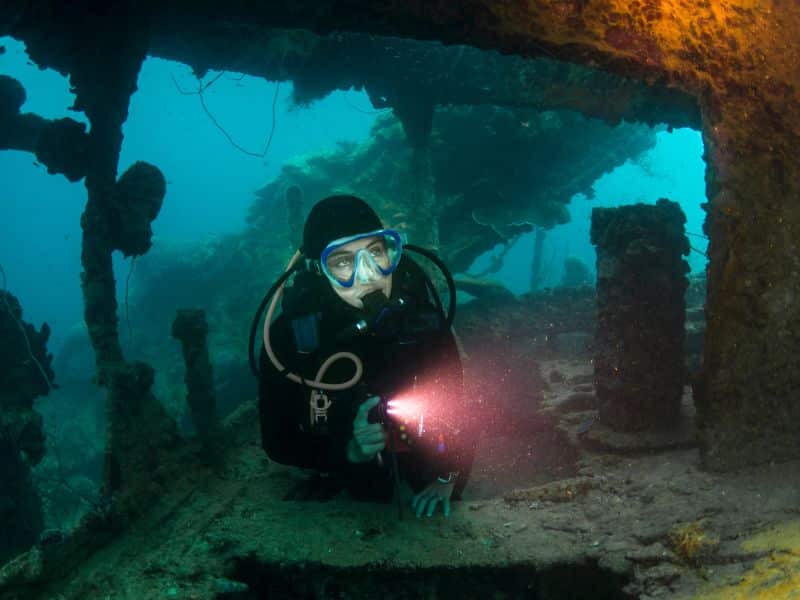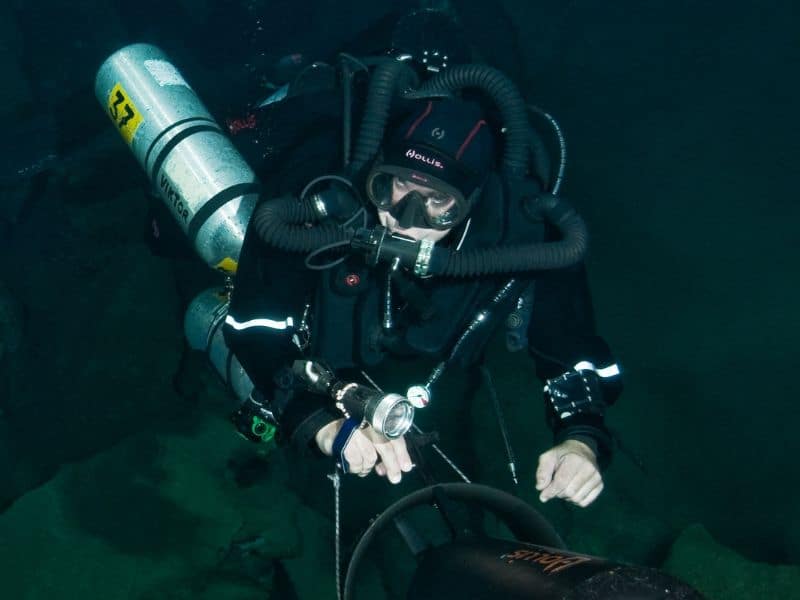3.1. What Extended Range Diving Courses Are Available?
There are different certifying organizations you can trust for extended range diving training. However, be aware that they might not call it exactly that. Note that all technical diving courses are essentially extended range courses. Thus, it’s not strictly about a specific course but comprehensive training programs that do not necessarily align from one agency to another.
Let’s consider three internationally recognized agencies with high safety standards:
PADI (Professional Association of Diving Instructors®)
Program: TecRec
The TecRec program is divided into five main areas of knowledge: Tec, Sidemount, Trimix, Rebreather (CCR), and Instructor. To compare the open-circuit programs of these agencies, we will focus on TEC and Trimix. Here are the courses:
- Discover Technical Diving: Introduces divers to the basic skills and procedures of extended range diving in a confined water environment. It can serve as a foundation for the Tec 40 Diver course.
- Tec 40 and Tec 40 Trimix: Designed for divers transitioning from recreational to extended range diving. Allows diving up to 40 meters/130 feet. You will learn about dive planning, decompression procedures, and specialized equipment.
- Tec 45 and Tec 45 Trimix: Extends the depth limit to 45 meters/150 feet. Teaches planning and executing repetitive decompression dives using a stage/decompression cylinder.
- Tec 50 and Tec 50 Trimix: Allows extended range dives up to 50 meters/165 feet. Teaches performing dives with multiple decompression stops, using two decompression gases.
- Tec Trimix Diver: Turns experienced extended range divers into extreme divers. Allows dives up to 90 meters/300 feet, using multigas trimix computers and managing up to 4 stage/decompression cylinders.
- Tec Trimix 65: Extends the depth range to 65 meters/210 feet using a helium, oxygen, and nitrogen mix (trimix).
TDI (Technical Diving International)
Program: TDI Technical Diving Program
TDI’s extended range program is also divided into five main areas of knowledge: Open Circuit, Rebreather, Service, Technical (cave and wreck diving), and Professional. TDI’s open circuit courses start with TDI Nitrox, TDI Advanced Nitrox Diver, and TDI Sidemount, but without decompression yet. These serve as a precursor to what comes next.
- TDI Decompression Procedures Diver: Prepares divers for planned decompression dives up to a maximum depth of 45 meters/150 feet. Forms the basis for all additional extended range courses.
- TDI Extended Range Diver: Teaches techniques to use compressed air as a breathing gas for dives up to 55 meters/180 feet that require staged decompression, using nitrox or oxygen mixes during decompression.
- TDI Trimix Diver: Expands depth range and reduces narcosis during deep dives by adding helium to the breathing gas. Allows planning and executing dives up to 60 meters/200 feet with appropriate helium mixes.
- TDI Advanced Trimix Diver: Advanced course for divers wishing to reach depths up to 100 meters/330 feet using hypoxic oxygen levels (less than 17%).
SSI (Scuba Schools International)
Program: Extended Range
SSI’s extended range program also consists of five main blocks of knowledge: Open Circuit, Rebreather, Extended Range Cave Diving, Extended Range Mine Diving, and Extended Range Wreck Diving.
- SSI Extended Range Foundations Diver: Enhances confidence and control in the water through confined water/pool sessions (<12 meters). Certification upon completion.
- SSI Extended Range Nitrox Diver: Introduction to decompression diving and nitrox up to 40 meters. Use of breathing gases up to 100% oxygen for decompression.
- SSI Extended Range Trimix Diver: Course for technical dives with trimix up to 45 meters. Teaches use of trimix and nitrox up to 100% oxygen for decompression. Certification upon completion.
- SSI Extended Range Sidemount Diver: Use of sidemount configuration to explore confined spaces. Techniques for using stage bottles during decompression. Certification upon completion.
- SSI Technical Extended Range Trimix: Unlimited decompression dives up to 60 meters with twinset or sidemount configuration. Certification upon completion.
- SSI Hypoxic Trimix: Use of three stage bottles and twinset system for dives up to 100 meters with hypoxic trimix. Certification upon completion.




